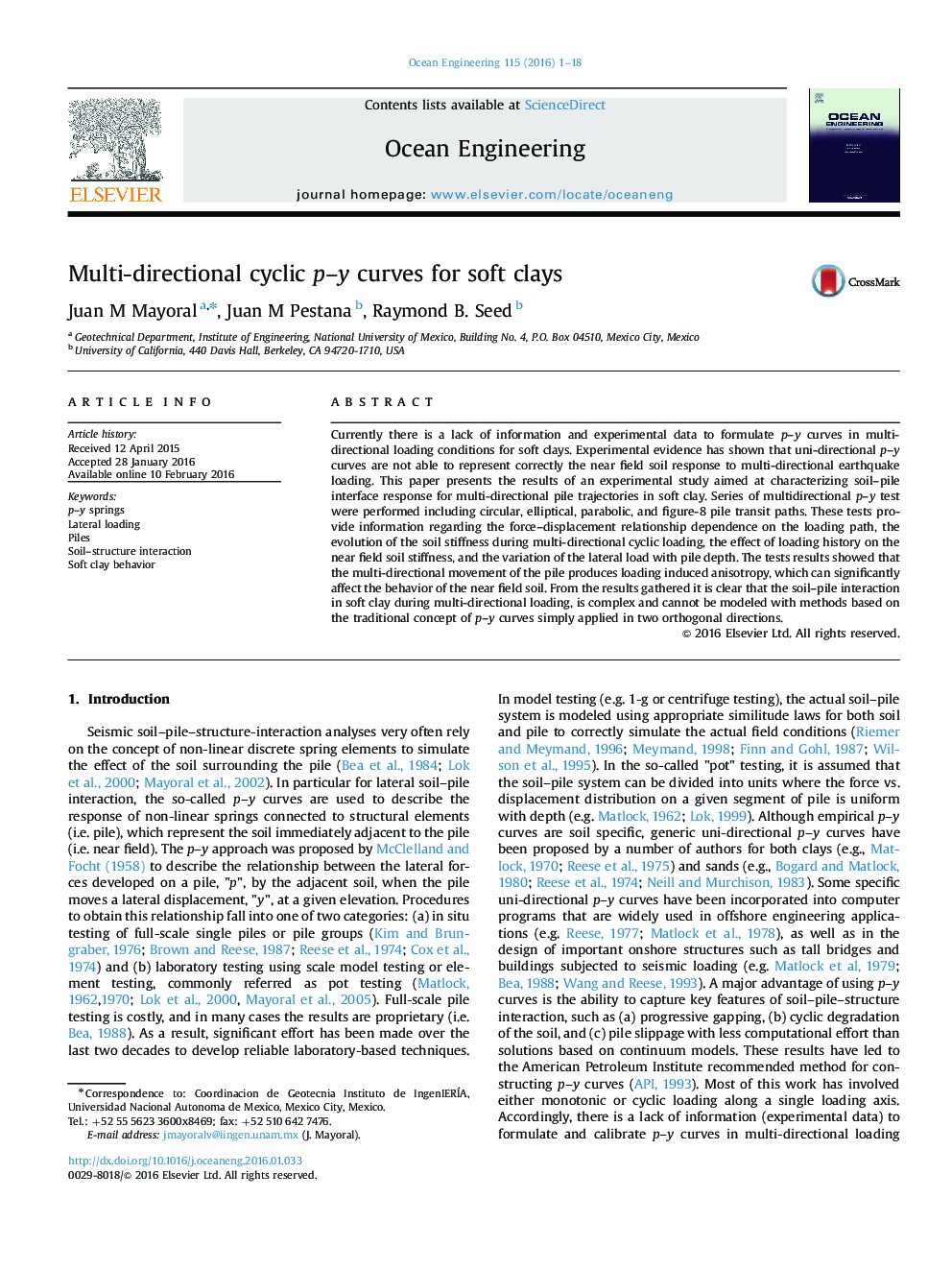| Article ID | Journal | Published Year | Pages | File Type |
|---|---|---|---|---|
| 1725187 | Ocean Engineering | 2016 | 18 Pages |
•There is a lack of data to formulate multidirectional p–y curves for clays.•Multidirectional p–y tests were performed for several loading paths.•Multidirectional movement of the pile produces loading induced anisotropy.•Plastic deformations related to previous loading affect soil response.•Multidirectional pile loading cannot be modeled with unidirectional p–y curves.
Currently there is a lack of information and experimental data to formulate p–y curves in multi-directional loading conditions for soft clays. Experimental evidence has shown that uni-directional p–y curves are not able to represent correctly the near field soil response to multi-directional earthquake loading. This paper presents the results of an experimental study aimed at characterizing soil–pile interface response for multi-directional pile trajectories in soft clay. Series of multidirectional p–y test were performed including circular, elliptical, parabolic, and figure-8 pile transit paths. These tests provide information regarding the force–displacement relationship dependence on the loading path, the evolution of the soil stiffness during multi-directional cyclic loading, the effect of loading history on the near field soil stiffness, and the variation of the lateral load with pile depth. The tests results showed that the multi-directional movement of the pile produces loading induced anisotropy, which can significantly affect the behavior of the near field soil. From the results gathered it is clear that the soil–pile interaction in soft clay during multi-directional loading, is complex and cannot be modeled with methods based on the traditional concept of p–y curves simply applied in two orthogonal directions.
Graphical abstractFigure optionsDownload full-size imageDownload as PowerPoint slide
